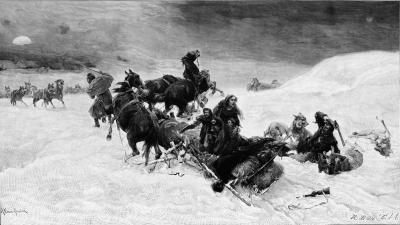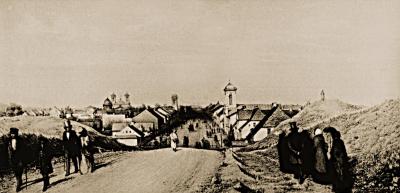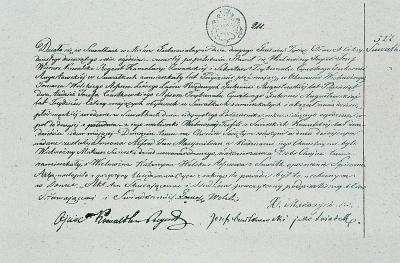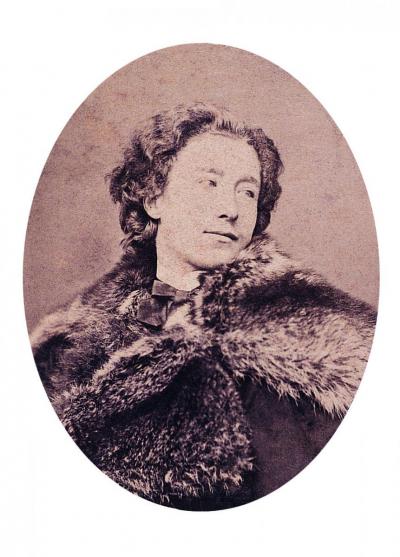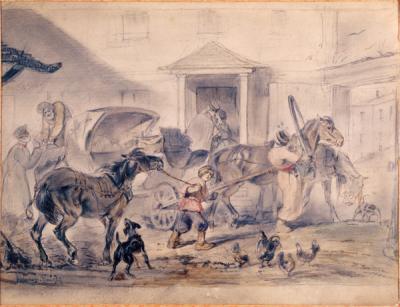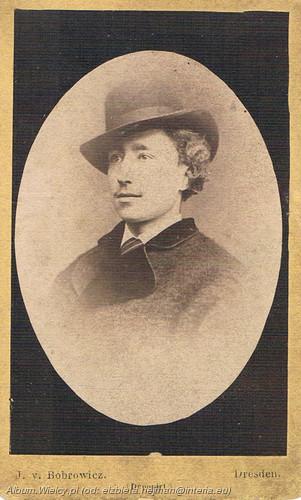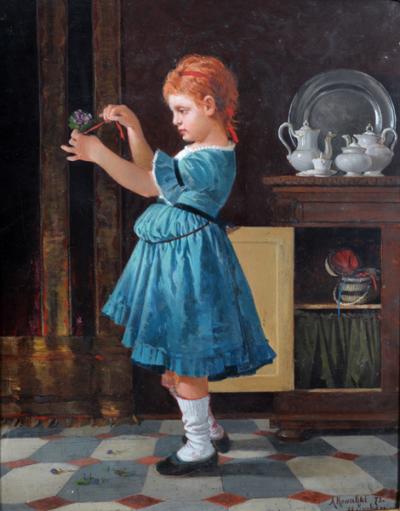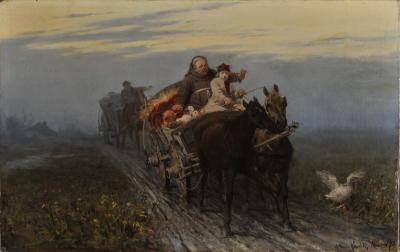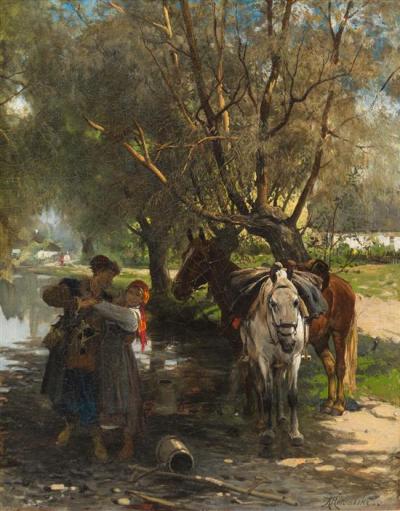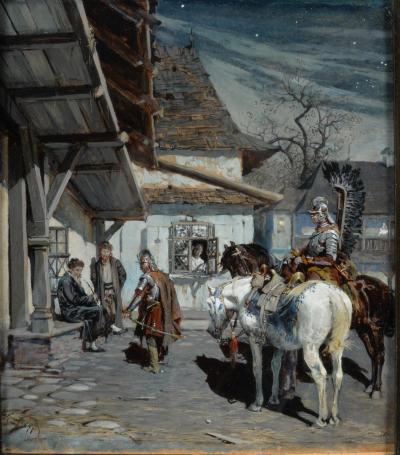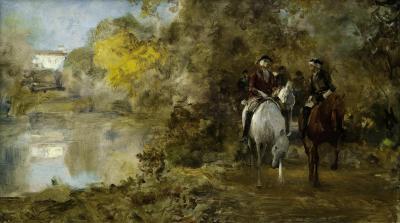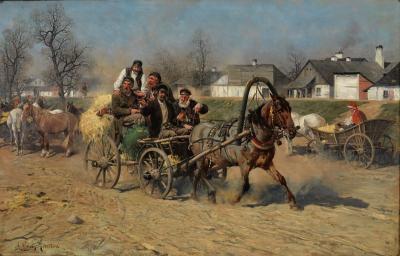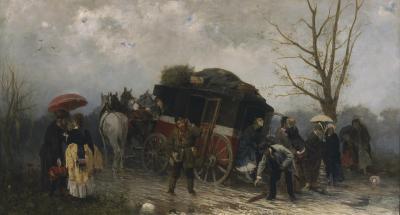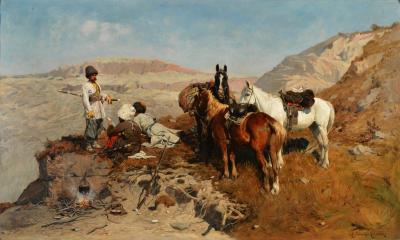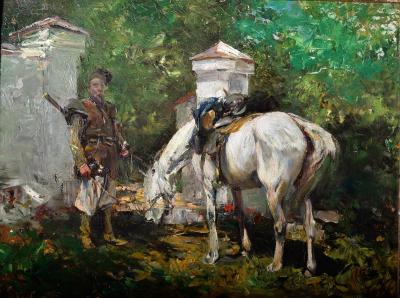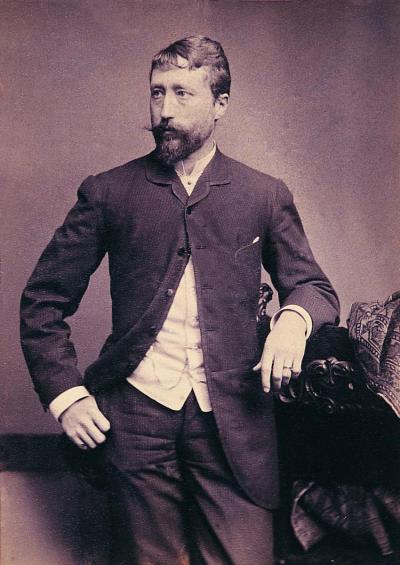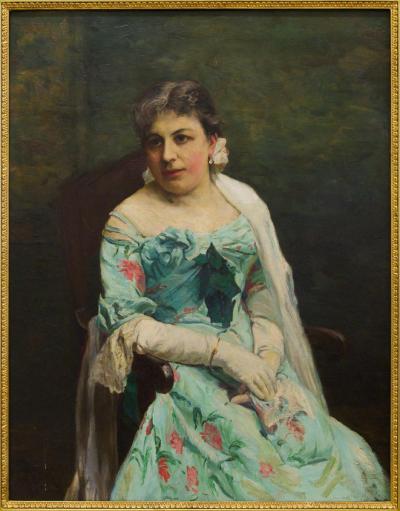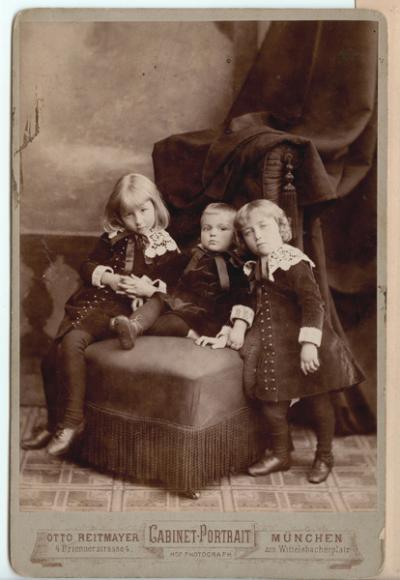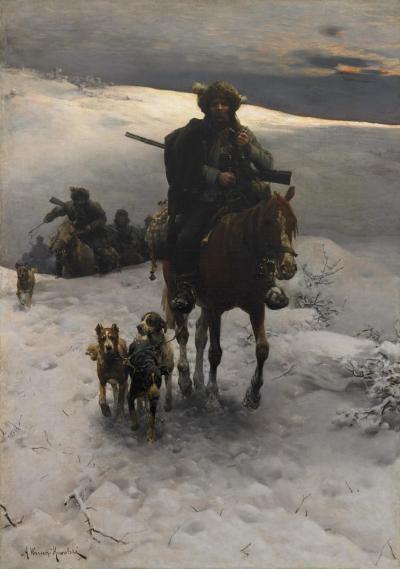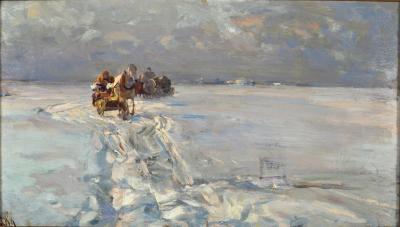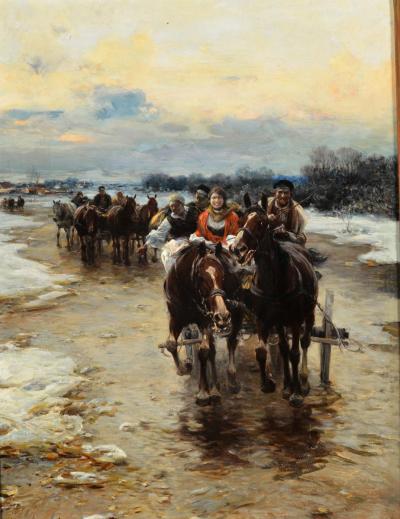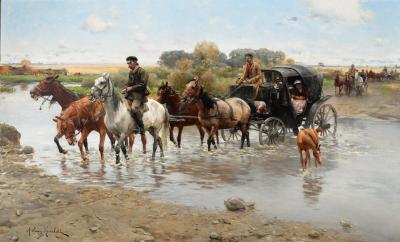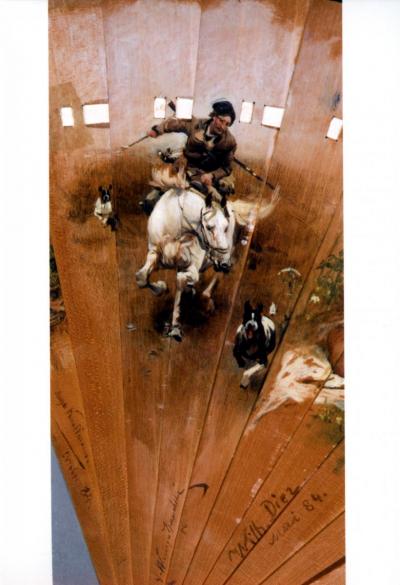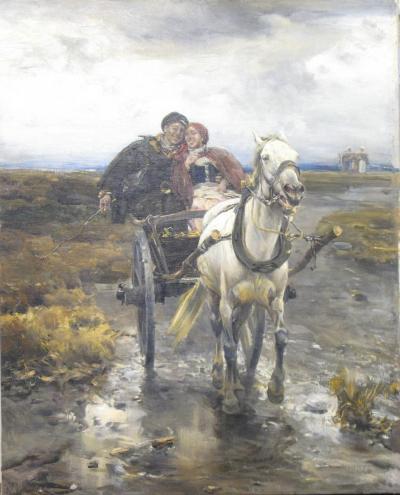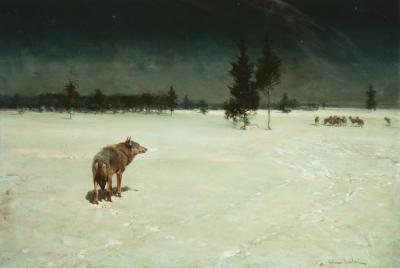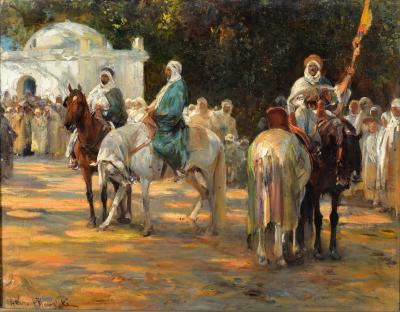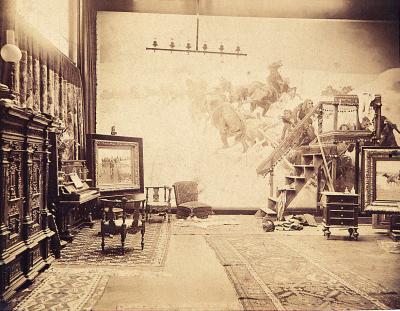Alfred Wierusz-Kowalski
Mediathek Sorted

In Dresden Alfred Wierusz-Kowalski (Ill. 6) had the opportunity of acquainting himself with major European paintings. He saw works by Rubens, Rembrandt and Dürer. As a student he spent many hours copying the works of Masters in the rooms of the Zwinger Gallery. Here he often found himself in the company of his fellow student Vaclav Brožik, who was equally disinclined to study at the Academy and later became a history painter.[11] Wierusz-Kowalski’s friendship with the Czech student had a great influence on his life. In December 1872 the two young men went on an excursion to Prague. Their journey of exploration was so promising that they left Dresden for good in winter 1873 and moved to the city on the Vltava. Here they spent about six months in the circle of young Czech artist friends, including František Ženišek and Josef Myslbec.[12] Brožik matriculated at the Art Academy and his Polish friend began working independently. He created small genre scenes (Ill. 7), which he exhibited and sold in Nikolaus Lehmann’s renowned art salon in Prague.[13] The artist’s early independence and his first financial successes had an effect on his future decisions.
In early summer Wierusz-Kowalski and Brožik decided to move to Munich together. Both of them registered at the Art Academy there and began their studies in August, the former under Alexander Wagner and the latter under Karl Piloty. One year later the two young men decided to go their separate ways. Brožik moved to Paris, whereas Wierusz-Kowalski was to remain for ever in the Bavarian capital.
1873 was the year in which the Polish artist made his international debut. His work Powrót kwestarza [The Return of the Donation Gatherer] (Ill. 8) was exhibited in the General Permanent Exhibition in Vienna.[14] It is difficult to call this work significant although it contains characteristic elements of the mature work of the painter, for example local customs and local landscape genre themes, the atmosphere of the motif, the shortening of perspectives, the large built-up group of figures in the foreground, the removed and synthetically expressed second background tiered behind further backgrounds, the spare and harmonious use of colours and the skilful accentuation of the colours. To this extent the painting Powrót kwestarza – it was surely made before he began his studies at the Munich Academy of Arts – indicates the artist’s talent and announces his career.
[11] Naděžda Blažíčkowa-Horová, Václav Brožík (1851–1901), Prague 2003.
[12] Błażiczkowa, op. cit., p. 20–21. František Ženišek (1849–1916), Maler. Josef Myslbec (1848–1922), sculptor.
[13] Catalog moderner und alter Gemälde der allgemeinen permanenten Kunst-Ausstellung von Nikolaus Lehmann`s Kunst-Handlung in Prag, Prague 1873, p. 6–7.
[14] Powrót kwestarza, 1873, oil on canvas, 42 x 65.8 cm. Muzeum Południowego Podlasia [Museum of Southern Podlachia] in Bielsk Podlaski.





















































































